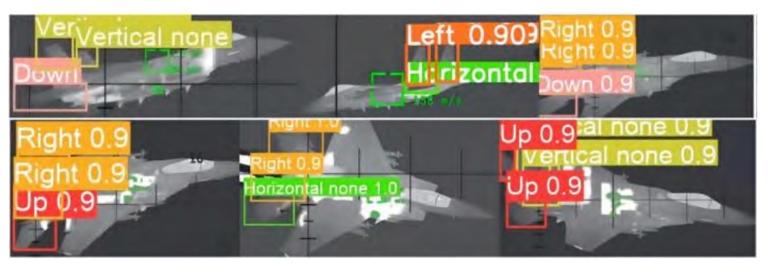Imagine fighter aircraft battling over contested skies, where split-second decisions aren’t made by a human pilot, nerves steeled and adrenaline pumping, but by an algorithm that sees the invisible—millimeter shifts in a rudder, the faint flex of an elevator—and acts faster than any mortal could dream. This is no longer science fiction. In fact, these superhuman observational powers are China’s latest leap in military AI, a system dubbed “Red Eye,” and it has the potential to upend the rules of aerial combat. Built by the Northwest Institute of Mechanical & Electrical Engineering in Xianyang, under the aegis of Norinco—one of China’s largest military manufacturers—Red Eye has the potential to leave human pilots in the dust.
As part of our work on the concept of Hyperwar, retired Marine General John R. Allen and I have long argued that AI’s true power lies in its ability to transcend human limits, not merely mimic them. Red Eye embodies that vision. In simulations detailed in the December 2024 Journal of Gun Launch & Control, this Chinese AI squared off against the complex aerial acrobatics of an F-15, a jet which, for decades, has reflected American air dominance, particularly in dogfights. To understand how disruptive Red Eye can be, picture this scenario: an F-15 dives low, releases munitions, then yanks into a sharp ascent—a maneuver designed to throw off any pursuer. But Red Eye doesn’t flinch. It uses a variety of cutting-edge optical sensors to detect the subtlest deformation in the F-15’s 2-meter elevator, then algorithmically anticipates the trajectory shift within milliseconds, and counters with precision no human could match. In fact, even before the changes in control surfaces have fully effected the maneuver. The result? Game over.
What sets Red Eye apart is not just brute computational force—though it has plenty of that—but its unique approach. Using a modified YOLOv8 neural network, it peers through infrared imagery to analyze the physical mechanics of its rival’s control surfaces. This extends beyond trajectory prediction, the type of data yesterday’s AI pilot models might have been trained on. Red Eye watches control surfaces bend and flex, reading the intent signaled by minor movements of metal before a maneuver even unfolds. It’s a shift from guessing where you’re going to knowing what you’re about to do. In simulations, it’s shredded the last bastion of human advantage: unpredictability. Sharp jinks, wild dives, erratic rolls—moves that once confounded algorithms—now fall apart under Red Eye’s relentless gaze.
You might ask what value such a system has in an era where long range, beyond visual range combat is the expectation, not classic dogfights. Let me explain. First, when two stealth aircraft face off against each other, potentially in an active electronic warfare environment where sensors on both sides are being blinded, it is still possible to end up in close quarters combat. Second, AI pilots have virtually no footprint. They can pilot the largest bomber, and also the smallest missile. So, the maneuvering we’re discussing in the context of Red Eye can as easily be implemented in a next generation Chinese beyond visual range missile. And finally, loyal wingmen aircraft are expected to be smaller, stealthier and used in larger numbers. All three of these factors increase the chance that they sneak up on or catch up with opposing fighter aircraft. In fact, AI models like Red Eye are perfect for loyal wingmen drones.
Red Eye isn’t China’s first foray into autonomous air combat. Back in 2023, the South China Morning Post reported that AI-piloted drones were already dueling in real-world trials—small, scrappy efforts but a glimpse of what was to come. Red Eye is the next logical step in the evolution of China’s autonomous military piloting models. It is a system likely destined for heftier platforms, perhaps even China’s stealthy J-20 and the loyal wingmen it will fly with, such as the FH-97A. We don’t yet know if it’s fully deployed—Beijing plays its cards close, as we found out recently when two Chinese sixth generation aircraft suddenly tore through the skies—but the simulations suggest it’s no mere prototype. It’s a contender and may even be honed quickly and made ready for initial deployment.
Across the Pacific, DARPA’s Air Combat Evolution program has been testing AI in real jets like the X-62A, pitting algorithms against human pilots in live dogfights since 2023. The U.S. Air Force aims to field 1,000 unmanned warplanes – Collaborative Combat Aircraft, or CCAs, by 2028. In the race to achieving autonomous fighter aircraft control, China’s not just keeping pace—it’s pursuing its own innovative path. Where known Western systems have leaned on trajectory data and probabilistic models, Red Eye’s infrared control surface monitoring feels almost a biological intuition, a predator locking onto prey through heat and motion. That divergence matters because in such competitions it’s not just about who gets there first, but who gets there smarter.
The implications of this technology extend far beyond the cockpit. Red Eye’s autonomy—its ability to decide, react, and dominate without a human in the loop—heralds a shift in warfare’s DNA. I’ve written before about AI’s potential to compress decision cycles and to collapse the “OODA loop,” a longstanding military acronym that represents military decision making as observing, orienting, deciding and acting. We are close to that moment when autonomy will turn mere seconds into eternities. Here, we see it in action. A human pilot blinks; Red Eye doesn’t. A human hesitates; Red Eye acts. A human pilot specializes at a few sets of missions. Red Eye could do it all. A military pilot tires… If systems like Red Eye show real world results, then I doubt this technology will stay limited to human augmentation. It can rapidly head to mass replacement, a machine that doesn’t just fly the jet but owns the fight. Yes, there will still be roles for human pilots, but perhaps not at the bleeding edge of the fight.
Critics will cite ethics, and they’re not wrong to pause. An AI that can outthink and outgun a human pilot raises questions we’ve barely begun to answer. Who’s accountable when Red Eye pulls the trigger? What if it makes a mistake? How do we constrain a system that learns from every kill, even its own? For AI lives beyond the death of the substrate that runs it – a formless, unconstrained, networked and diffused brain. But at every stage, as we’ve seen, the very real, tangible progress of military autonomy technologies are outpacing the theoretical considerations of ethicists.
There are lessons here for business leaders, technologists, and policymakers, and they are stark: AI’s frontier isn’t theoretical anymore. It’s operational, measurable, and—right now—flying circles around us. The U.S. has the talent and the vision, but real capability is built on more than a never-ending string of prototypes. Real capability demands scale, speed, and a willingness to work around organizational issues and rethink the game. Red Eye may be China’s triumph—but it’s a wake-up call for America. The future is here. Are we ready?
Read the full article here









